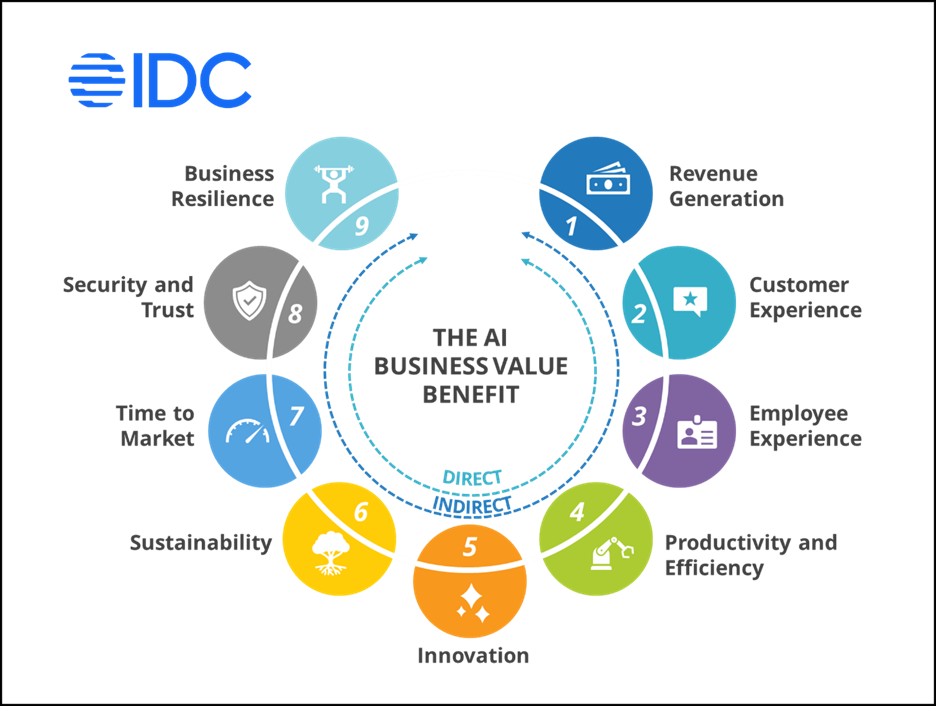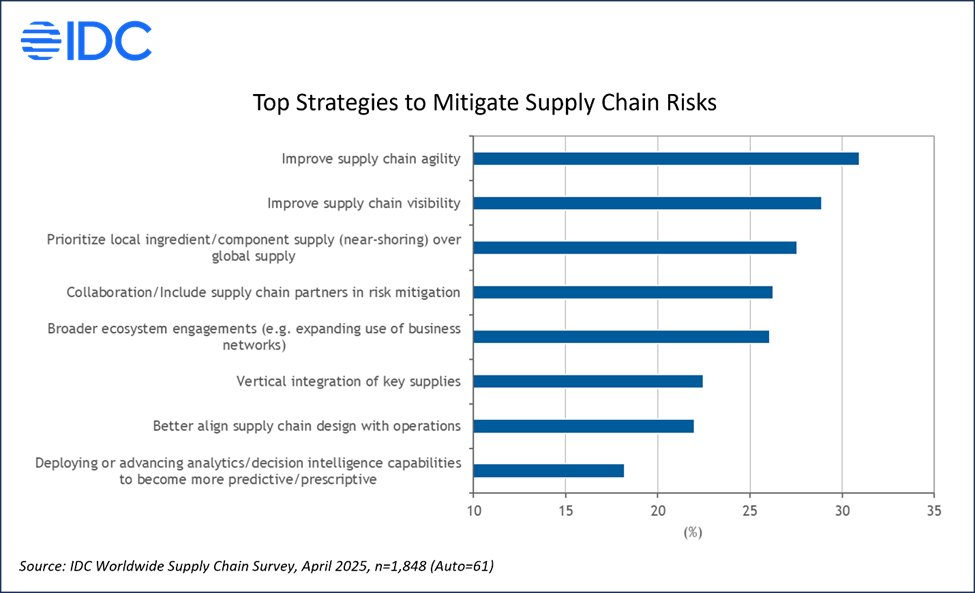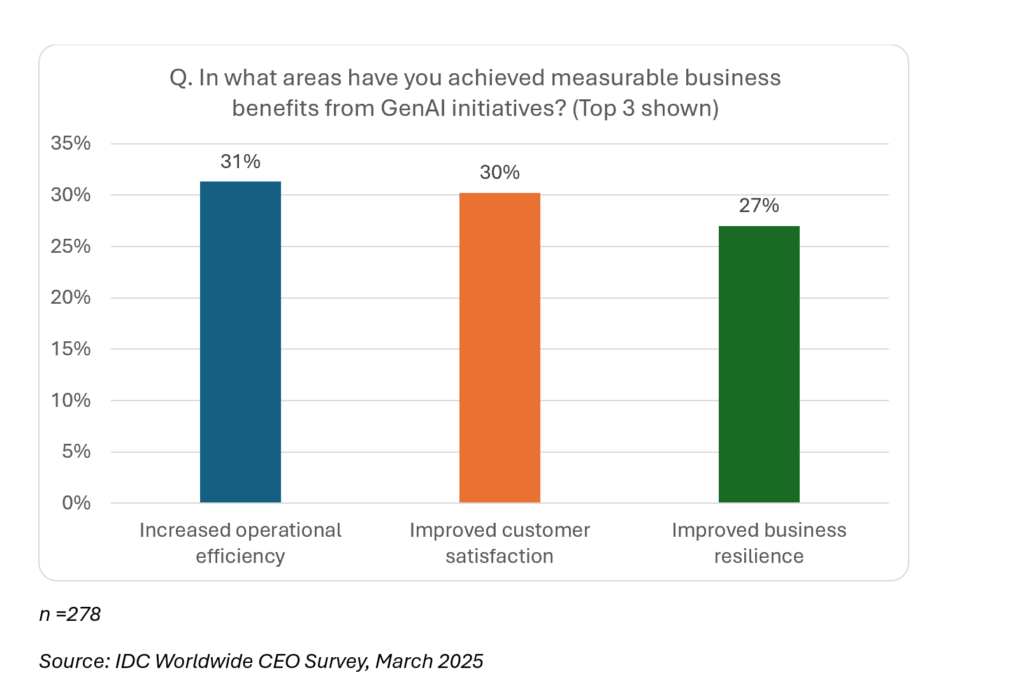From Hype to Impact: How Agentic AI Unlocks Scalable Use Cases for Generative AI
Across the Asia-Pacific region, enterprises are exploring generative AI (GenAI) with urgency, but scaling remains elusive. IDC research shows that while organizations ran an average of 23 GenAI proof-of-concepts (POCs) between 2023 and 2024, only 3 reached production. Of those, just 62% met expectations. The real challenge? Turning experimentation into enterprise value. Why Agentic AI Matters for GenAI Use Cases GenAI’s potential extends far beyond content creation. But to realize its full value, organizations must move past isolated tools and embrace Agentic AI, intelligent agents that operate with autonomy, context, and integration across systems. Agentic AI is the missing link between promising GenAI pilots and impactful enterprise transformation. It enables scalable, reusable use cases that drive results in productivity, quality, cost-efficiency, and resilience. What Makes Agentic AI Different? Unlike static models, Agentic AI introduces enterprise-grade capabilities, including: Context retention for continuity across interactions Multi-step task execution for complex operations Exception management to handle real-world unpredictability Security compliance for enterprise environments This marks a shift from isolated AI functions to end-to-end automation, turning GenAI from a productivity tool into a strategic business engine Super Use Cases: Where Agentic AI Delivers Impact Not all AI use cases are created equal. The most successful organizations are focusing on “super use cases,” scalable, process-centric applications that integrate AI into decision-making, workflows, and operations. These include: Customer support orchestration Fraud detection and resolution IT and HR automation Context-aware marketing and personalization These use cases aren’t just feasible with Agentic AI; they thrive because of it. Building with Reusable Design Patterns To scale Agentic AI, enterprises must move beyond bespoke solutions. Reusable design patterns enable the rapid and flexible deployment of AI. Key patterns include: Task planning: Break down goals into AI-executable steps Tool orchestration: Connect agents with enterprise platforms Self-reflection: Learn from past actions to improve accuracy Collaboration: Enable multiple agents to work in sync These patterns act as blueprints, fueling faster time to value across diverse use cases. Transforming Work, Not Just Tools While personal GenAI apps, like note-takers and summarizers, are helpful, they’re quickly becoming commoditized. The real edge lies in deeply integrated, business-specific applications. Agentic AI enables a rethinking of work itself: Marketers will optimize for LLMs, not just search engines. CX leaders will deploy agents to unify channels, systems, and data. Ops teams will automate workflows end-to-end. In 2025 and beyond, Agentic AI won’t just support the work—it will redefine how work gets done. Accelerating Agentic AI Adoption As businesses increasingly explore automation, from robotic systems to intelligent assistants and sophisticated agents, agentic AI is poised to reshape daily work across industries. However, many organizations are unprepared to manage the dual challenge of evolving work practices and adopting new technologies. Leaders need support navigating cross-functional change, especially as new roles like Chief AI Officer (CAIO) emerge. Technical professionals must expand their skill sets to include agentic development platforms, while nontechnical staff will need to learn workflow automation and natural language prompting. Successful adoption will depend on aligning change management strategies with regional work cultures and technology maturity levels. In 2025 and beyond, agentic AI will not just change tools; it will redefine how work gets done. Some key considerations: Technical teams need to master agentic development platforms. Non-technical users must learn prompt-based automation. Leaders should align transformation efforts across regions, each with its own pace and culture of adoption. Success relies on cross-functional collaboration and a clear strategy to integrate agentic AI into daily operations. Measuring What Matters: A Holistic View of AI’s Business Value One of the biggest barriers to AI adoption is the difficulty in measuring return on investment. To address this, IDC’s AI Business Value Benefit Framework outlines nine key dimensions, ranging from revenue growth and customer experience to innovation, resilience, and sustainability, that help organizations evaluate both the direct and indirect impacts of AI. By taking a broader view of AI’s value beyond just cost savings, this framework enables businesses to align AI investments with long-term strategic goals and drive meaningful outcomes across operations. For more on this topic, please refer to the IDC report From AI Return on Investment to Business Value. Final Word: Your Next Move Starts Here Agentic AI turns GenAI from an experiment into a strategic differentiator. By focusing on super use cases and embracing reusable patterns, enterprises can move confidently from POC to production and unlock the full promise of AI. Your next move? Let’s make it count, with Agentic AI at the core. Take the next step and realize the full business value of AI with our three practical webinars: To learn about the new strategic imperatives in store for CIOs in the era of Agentic AI, download this eBook. source
From Hype to Impact: How Agentic AI Unlocks Scalable Use Cases for Generative AI Read More »







